Humming Blog |
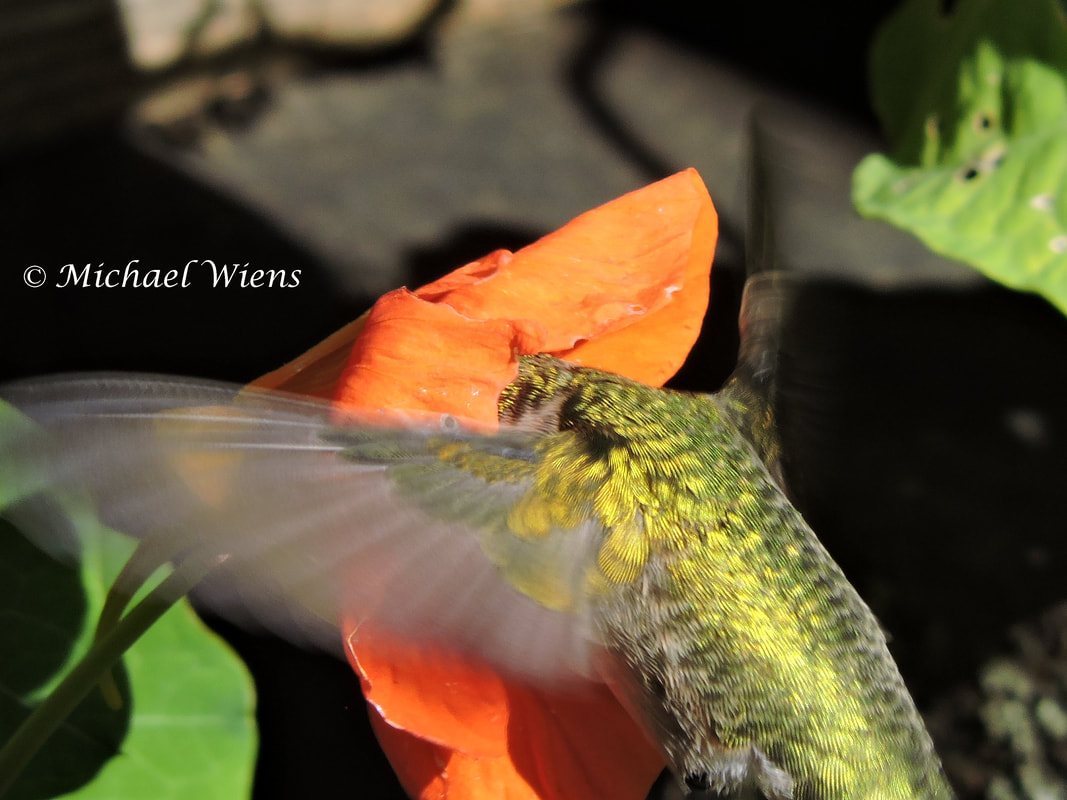 I think by now everyone knows that hummingbirds need flowers to survive, but what features do they look for in them to make them part of their daily routine? Hummingbirds can feed from nearly every flower available to them, however, there are certain criteria that make some flowers better than others. First of all, nectar is a necessity. It's the nectar they're after, so why do they prefer some over others? Flowers differ greatly by the sugar ratio provided, the access to the nectar, and the quantity of nectar in each flower. The sweetness of nectar within the flowers was created to entice many insects and hummingbirds into the flowers, so the pollen would attach itself to these creatures, and then be carried to other flowers to complete the pollination cycle. Although bees are a little less discriminating in their taste of pollen, hummingbirds will sample many flowers, and then separate the good from the bad. So what are hummingbirds looking for, to make select flowers a top contender? First of all, sweet nectar. The sweetness is what draws them in. The higher concentration of sugar, the better. The ease of access to it is what makes it a real winner. Let me compare two flowers to show you the difference. Petunias and Nasturtiums are very similar in flower size, but there is one distinct difference between the two, ease of access. You would think the access would be the same because of their similar shape, but the difference is more in the texture of the petals that makes them quite different. Petunias are a much softer and flimsier texture, while the nasturtiums are a much more rigid petal. In the image I've selected you can see how deep a hummingbird must go to access the nectar. When a hummingbird inserts its head so far within the flower, the wings start to interact with the petals of the flower. With a rigid flower you don't get a serious vacuum effect as the hummingbird cycles it's wings, whereas a petunia has very soft flimsy petals that get drawn to the wings far too easily. They find it much more difficult to fly and feed at the same time with the petunia. Of course hummingbirds are very opportunistic, and if all they have are petunias, they will feed from them. But if you have a selection of good and bad, they will decipher between them, and choose the good every time. I've talked about nasturtiums a lot in the past, and it's because they have two or three large drops of nectar in every flower. There are not many flowers, other than perhaps honeysuckle that contain such a large dose of sweetness. But because of the size and difficulty of access to the nectar in the nasturtiums, adult hummingbirds, specifically the smaller adult males, will often times avoid them. This is where nasturtiums are just a great flower for the younger birds, that are just enticed greatly by the quantity of nectar in each nasturtium flower. So what makes a flower even better? Something smaller, where they don't have to insert their head so far into the flower, where they can't see around themselves while feeding. Hummingbirds become very aware of their surroundings in a short time after leaving the nest. They've got enemies, including their own with anger issues that always make them susceptible to attacks while feeding. So the best choices are always smaller flowers with lots of nectar, with ease of access. So the question is, which flowers are the best by these criteria? Delphiniums, Salvia, Honeysuckle, Bee Balm, Vermillionaire, Crocosmia, and any others with the same characteristics. The photo is a young Ruby throat that was greatly enticed by the rich nectar deep within this nasturtium. At this point in its life fear wasn't a factor, but the nectar sure was. Photo taken N.E. of Edmonton, Alberta, Canada.
0 Comments
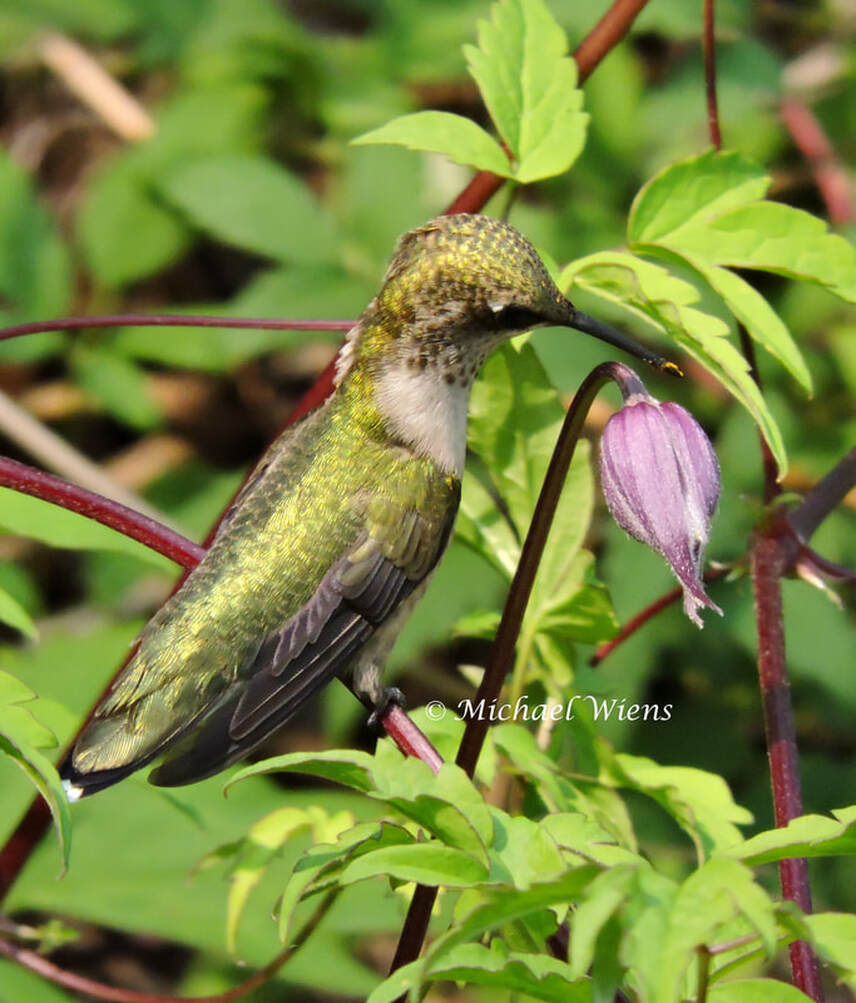 Repeatedly, several times a day, this youngster made a special point to visiting the Bluebird Clematis. It was later on in the season, and not many blooms remained, but the ones that did, received special attention. This juvenile male Ruby throat would get himself into all kinds of trouble, digging deep within the sturdy vines of this overgrown clematis. He knew there was some valuable nectar in each one of the blooms, and spent much of his time trying to extract it. Not only did he visit the open blooms rich with nectar, but he saw the hidden potential in all of those that remained tightly sealed. He watched and waited, and oftentimes poked and pried at the tightly sealed edges, just itching to access the fresh new nectar. Every morning at first light, you could see the excitement when he flew around the house, directly to his favorite. Every morning had new surprises and new blooms, and he knew it. Photo from 2018, taken N.E. of Edmonton, Alberta, Canada. 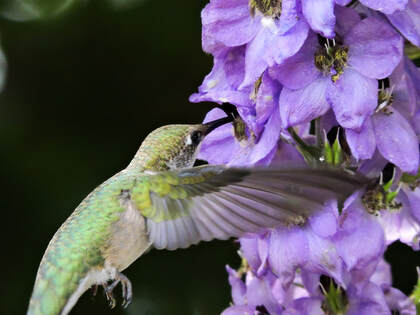 5/5 rating Delphinium 5/5 rating Delphinium It's that time of year again when all of us hummingbirders start planning out our garden and choosing the best varieties of flowers to attract hummingbirds. I'm sure many people have their favorite choices based on a wide range of ideas, but I want to give you my list for 2021 based on my own criteria. First, I want to tell you what I base my top selection on. 1. To rate a flower in my top seven, it has to attract hummingbirds consistently. 2. Hummingbirds must prefer these flowers over those that don't fall in the top seven. In other words they will make a special point to seek out particular flowers in and amongst the rest. 3. To rate a flower 5/5 it must attract both the adult and juvenile hummingbirds. Many flowers work extremely well for the juveniles, but the adults will spend very little time in them. In that case they don't get the top rating. I understand that everyone lives in a different climate and therefore have a different variety of plants that grow well within that climate. Of these plants that I have listed, most of them are grown as an annual, even though they are perennial in much warmer climates. 7. Zinnia, rating 3+. This is a terrific annual that grows up to 3 ft tall. Don't let this three out of five rating fool you into thinking it's not worthy. I consider zinnias one of the greater training flowers for young hummingbirds. They are a large easy target to feed from, without having to solve the entrance to the food. 6. Bluebird Clematis, rating 3+. This is a Hardy zone 2 perennial that produces an abundance of springtime blooms, and oftentimes sporadic blooms in later summer. The mature birds will seek out every flower in springtime, while the young ones will get themselves into real trouble later on in summer, as they try to climb around the vines to get to each and every flower. 5. Vining Nasturtiums, rating 3-4. These flowers can be a hit or miss with young hummingbirds. If they're brave enough to dive deep to find the multiple drips of nectar, they will continue to seek them out. When they locate the precious nectar, they will continue repeatedly to feed from each and every flower. 4. Fuchsia, rating 4-5. These flowers come in many varieties, in which some rate better than others, but all of them are proven winners. 3. Vermillionaire, rating 4-5. These perennials are grown as annuals in many regions. They contain an abundance of red flutes filled with nectar, that once found, will attract both the mature and the juvenile hummingbirds. 2. Salvias, rating 5. These flowers come in so many varieties, so it's very difficult to give a blanket rating across all of them. For the last two seasons I've grown farina blue salvias, and I couldn't be happier with them. I don't know about most regions, but in mine they are problem free, showy, continue flowering throughout the hummingbird season, produce a jewel of nectar in each and everyone of the hundreds of flowers it produces, and best of all it attracts hummingbirds better than just about anything else. It produced so well for me that I've taken cuttings and produced over 30 of them for this coming season. They are absolutely perfect in pots, and if raised off the ground, even better. 1. Delphiniums, hardy zone 2 to 6 perennial, rating 5. Many people know that I grow these flowers by The hundreds, because they produce like nothing else in the garden. They have one advantage over most other flowers in that they grow to heights of 4 to 10 ft. Higher flowers are always top choice for hummingbirds because they have greater security further off the ground. The hummingbirds gravitate towards these clusters in my garden, and will fight furiously over them. If I have any complaints, it would be the delphinium worms that can destroy the buds and blooms before they even open. The damage is usually visual early on, and if you see any signs of curled up buds or black spots within the stem, open them up and get rid of these worms, which will be light green in color. If you catch them early, you will have blooms on heads that can be over 2 ft tall atop the tall green stalks. Because of the height that these grow, it is often times necessary to stake them, and/or plant them against buildings protected from wind. Those are the top seven, and even though I have a great selection of other plants in the garden, some others could also be included such as Hosta, Honeysuckle(if they bloom at the right time), Scarlet Runners, Bee Balm.... and more. If you grow some or all of the flowers I've suggested, I promise you, once a hummingbird locates your garden, they WILL make return visits. Some people only prefer flowers, and as for myself I have an abundance of flowers and feeders, which I find essential. But no matter which way you go, if you choose these flowers, you will be successful! 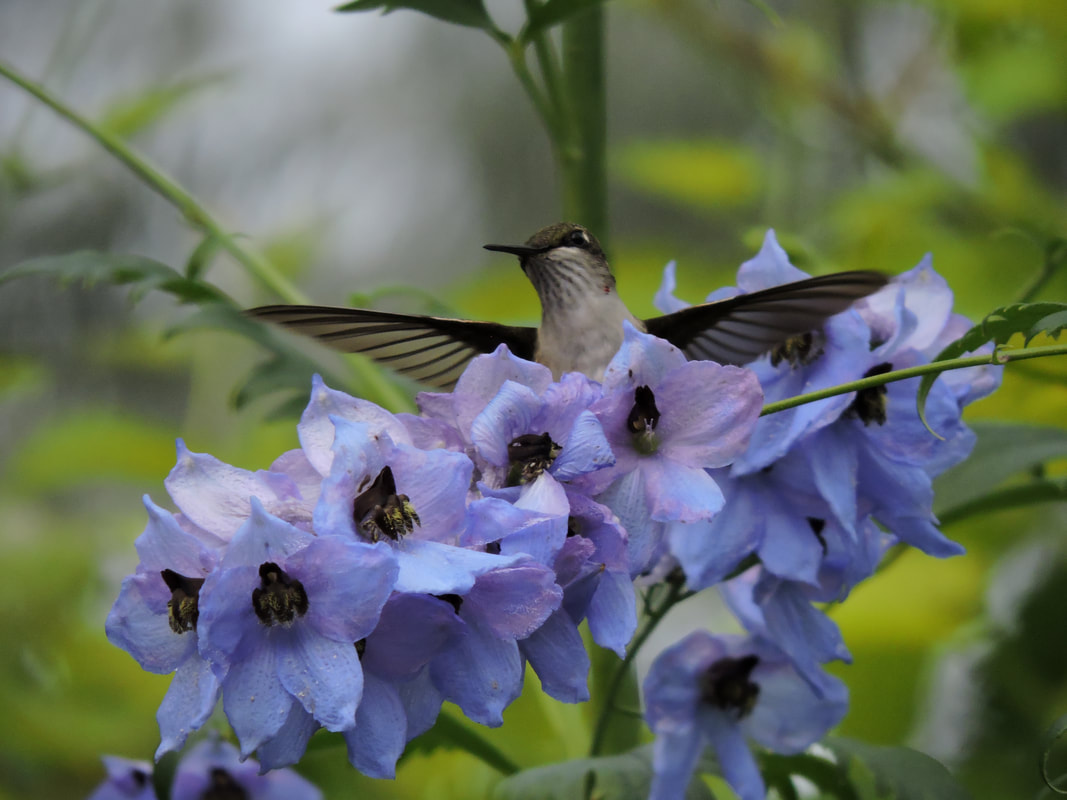 You can spend hours upon hours trying to plan out the perfect capture, and truthfully when it comes right down to it, it's those random surprise photos that turn out to be the most amusing. Feeder pictures, those of them hovering over the flowers and some of the more common captures can fill your computer's storage. But it's the surprise captures that are so much more unusual than the rest that really stand out. You can easily identify this young hummingbird as a male, with his little red freckle and a pattern of dark spots across his throat. But another way to identify him as a young bird is by his antics. Young birds don't have the endurance of the adults, so they tend to perch a little more frequently until they develop that endurance. They will get themselves into unusual circumstances, oftentimes entangled in the branches and leaves of flowers. Food comes before fear early in their lives, and over time of battling their way out of some tough predicaments, fear starts to arrange their priorities a little bit differently. They'll start to choose a little more wisely as to which flowers are worth the effort and which ones can get them into big time trouble. This was a pleasant surprise where I had clear focus of the Delphinium flowers, and up from behind them popped a playful young male. Photo taken August 4th, 2017. N.E. of Edmonton, Alberta, Canada. 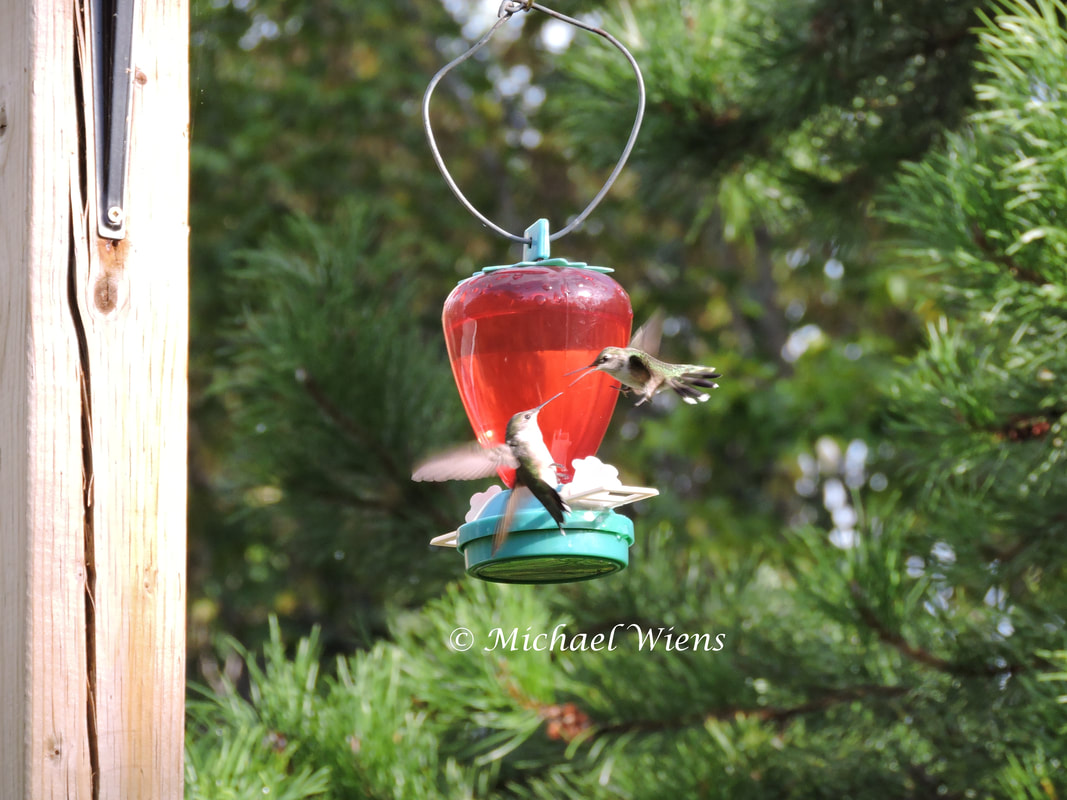 Question: I have a back yard feeder or two ,when two or more come at same time it becomes aerial combat. I've seen feeders with many ? I was thinking maybe family ?? This really is a complex question that has many answers, but I can say that it doesn't have anything to do with them being the family or not. Hummingbirds are inherently possessive of their foods, but when you see many birds at a feeder it's usually a good indication that none of them believe it belongs to them self. These videos we see of many birds at one feeder are oftentimes, or nearly always during the northern or southern migrations. Birds will stop in for a feed or stick around for a short time, and then move on to their breeding grounds. There's also another factor to consider - when the numbers increase dramatically, it's difficult to fight off several birds. When you watch these videos with numerous birds, notice their intense squeaking. They're still angry, but have far too many birds to battle. They do settle into a mode where they just have to accept all the others feeding, because it would be an un-winnable battle. In a case where two of them are squabbling over 1 feeder in your garden, it's nearly always due to territory. The Males refuse to share territory in their breeding grounds. They will fight to the death to defend their garden, food sources, and the females that they will breed with. I want to give you a brief story to explain something. Last summer I had numerous Males that kept showing up at our feeders, but would frequently be chased off by the dominant one. Then one male showed up on the feeder, and within seconds another one showed up on that same feeder. Neither one chose to battle the other male, because both of them knew they were invading the feeder of the dominant male who hadn't yet spotted them. They were both content to feed, because they both knew they were getting a free pass until the dominant one would spot them. Both of these Males knew that the other was not the one in charge, and both knew the other was not a threat, and this is a similar situation to when they are migrating. They start to think that THEY are invading another bird's feeder, so THEY don't do the chasing, but are merely trying to get in a quick feed without being chased off. Just remember during the season, outside of the migrations, it's primarily about territory and breeding, and that is when their most intense battles occur. When a hummingbird remains in a territory, unchallenged for length of time, they begin to assume the rights to that food source. |
Archives
June 2024
Categories
All
|
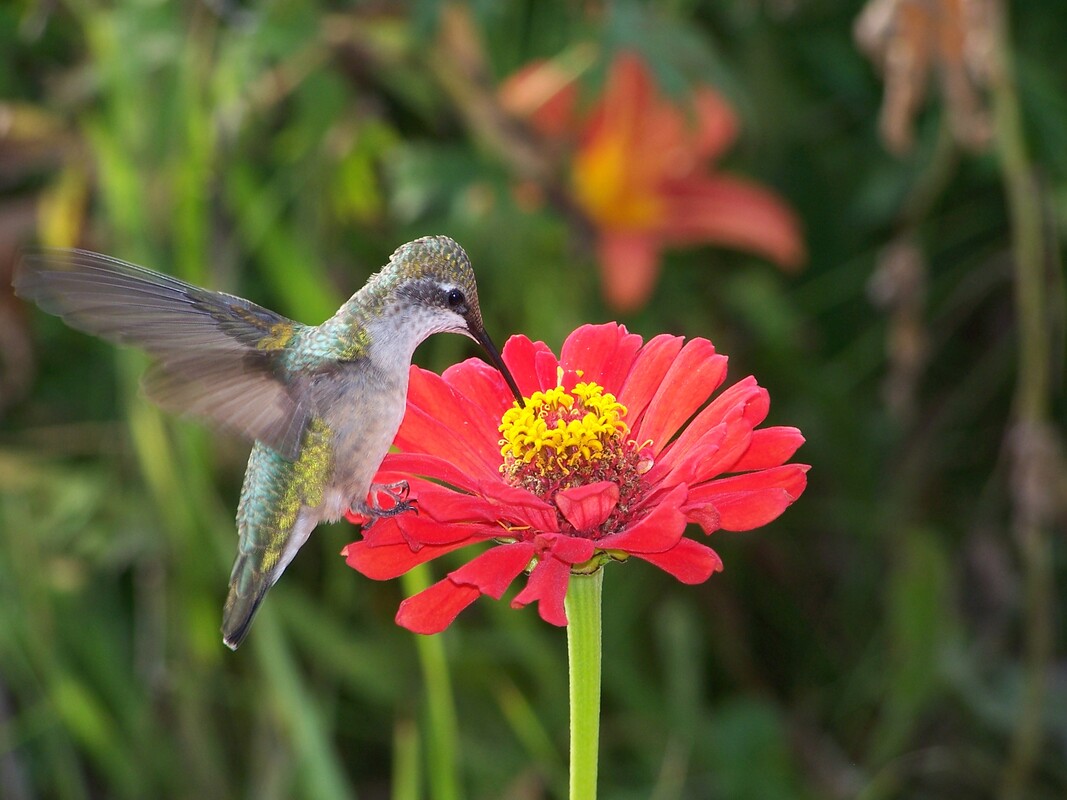
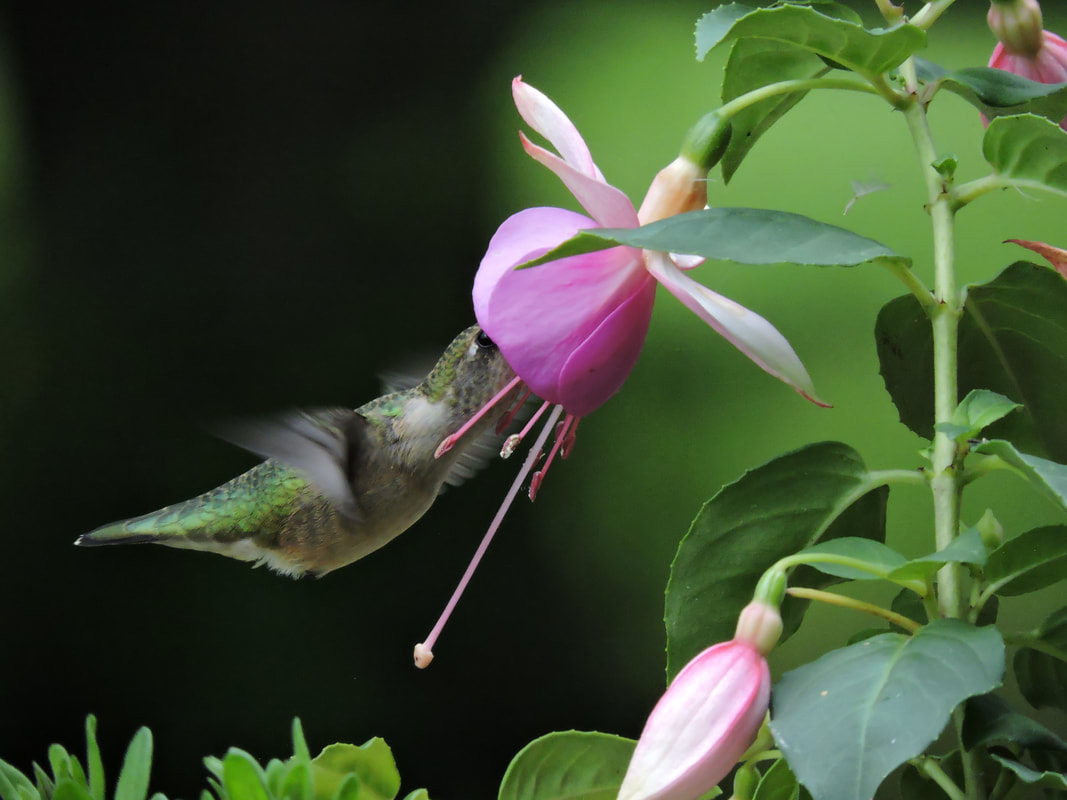
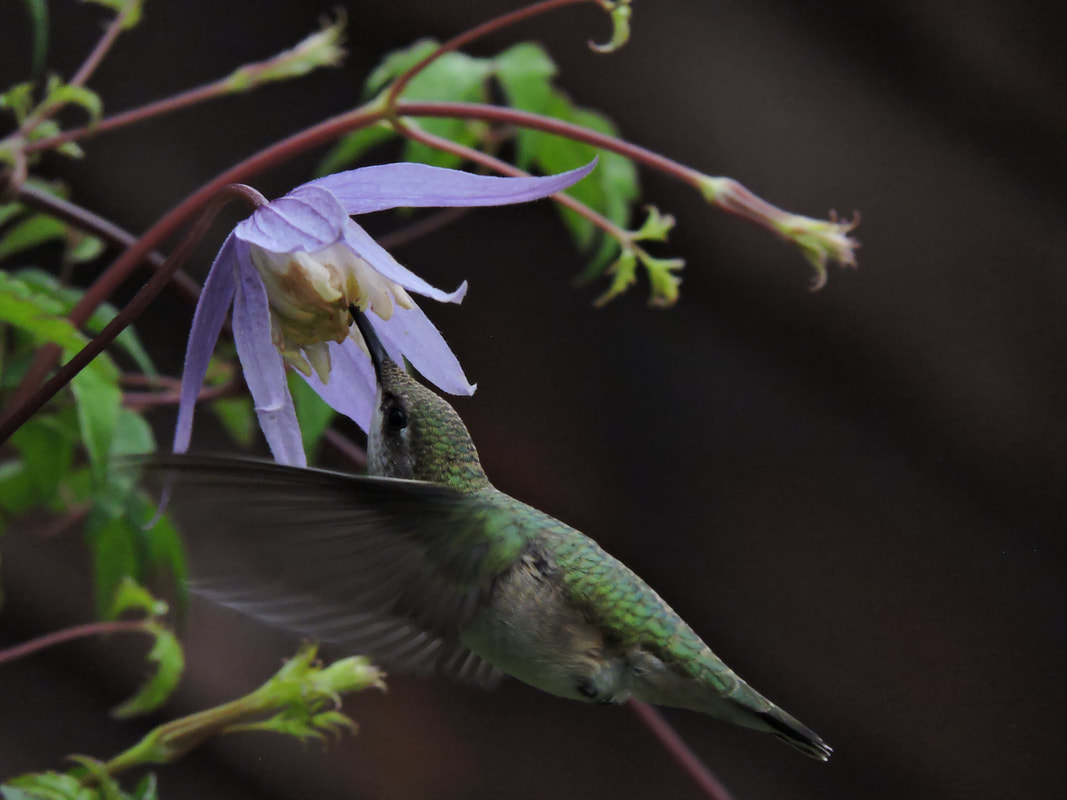
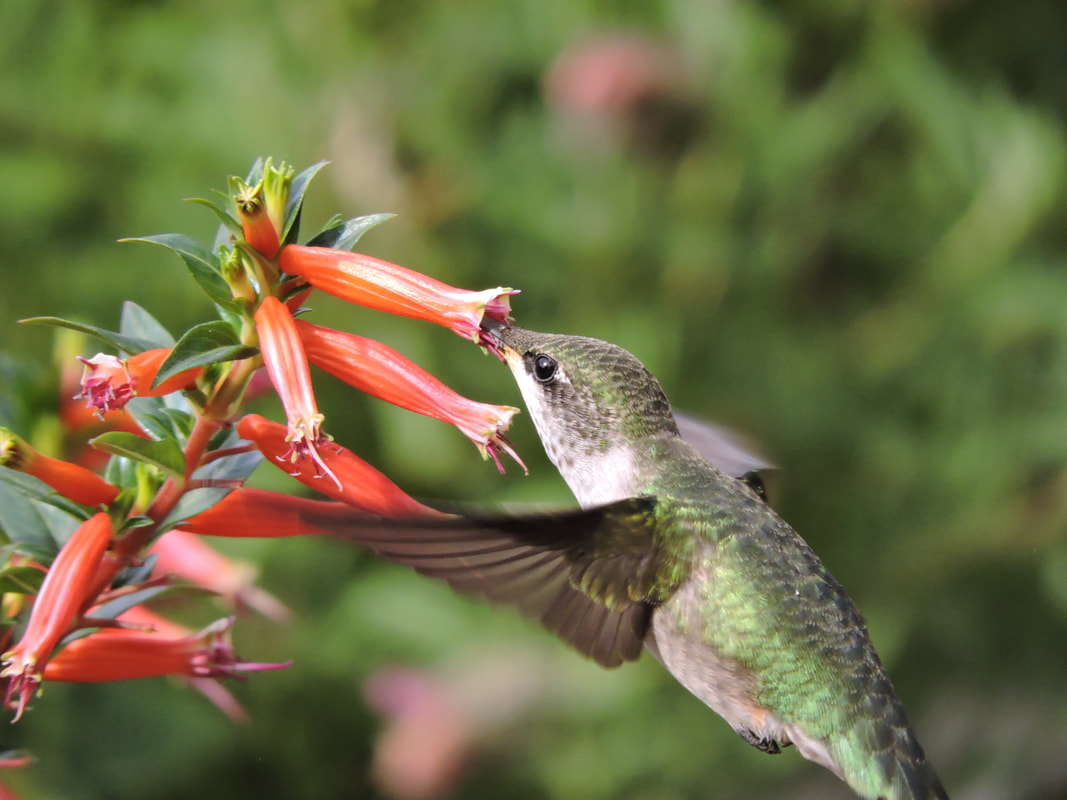
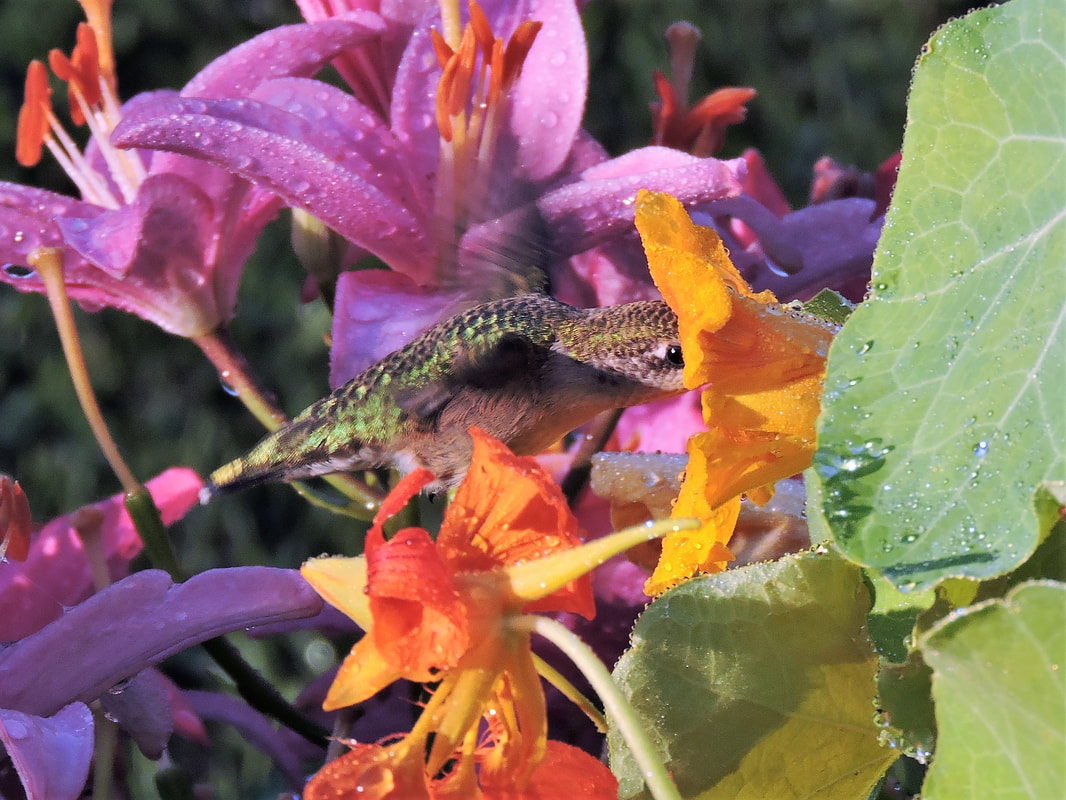
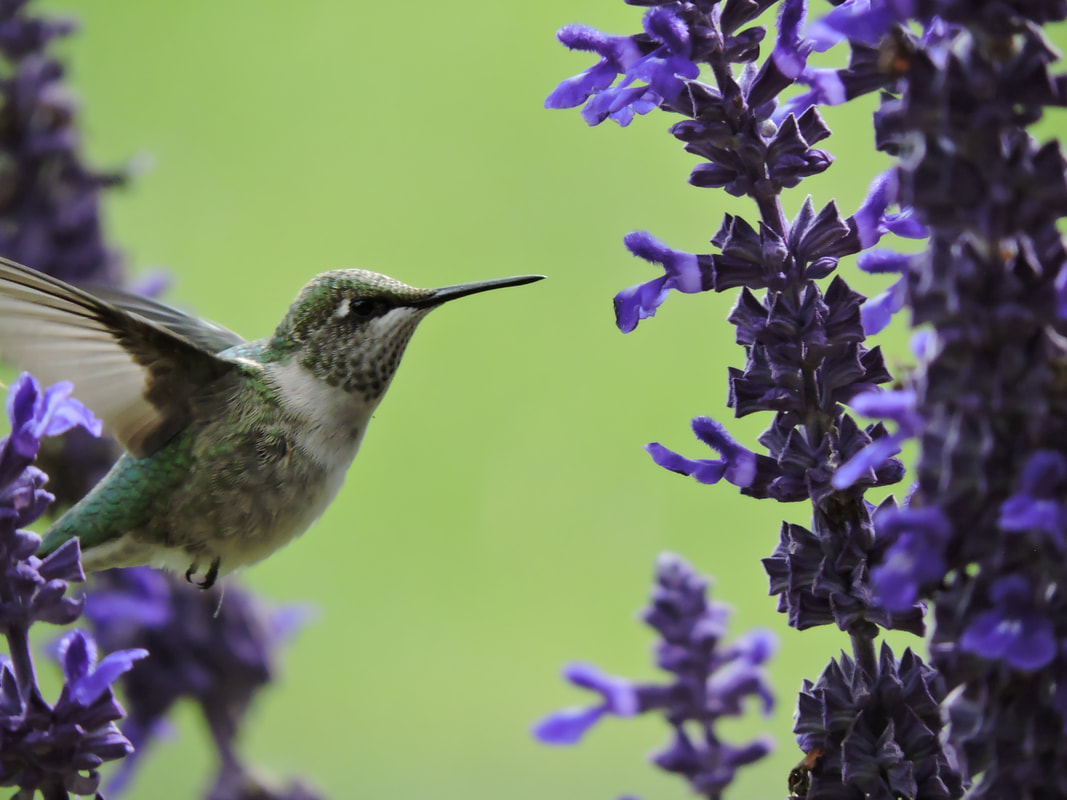
 RSS Feed
RSS Feed
